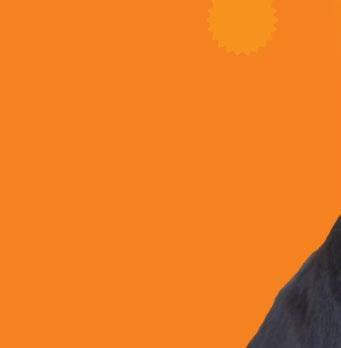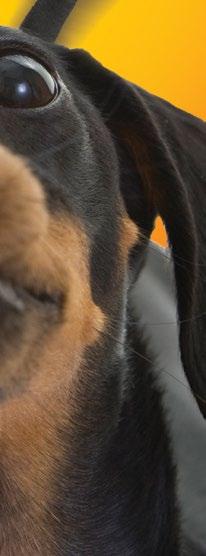










Do you know who never gets imposter syndrome? Cats. Cats don’t even think twice about what someone else thinks of them or whether they are good enough. They literally lie around and sleep all day to prove it. Me on the other hand. Wow, we need a long weekend to discuss this topic.
Have you ever felt like you are just short of realising your dreams? Just too slow to market with that great idea you have, just not artistic enough to start that greeting card company, just a little too young (or old) to join the market of small business owners working to fulfil your vision? Well you’ll be glad to know that those of us who are working in the market also don’t feel like we know what we’re doing most of the time.
Enter Francois van Coke, the first meet I had with Francois, now almost 8 years ago, was an awkward one. My teeth were chattering, and I had no idea what I was going to say when I asked him if he would be interested in being our very first celebrity cover. He had just released his hit single, Toe Vind ek Jou, with Karen Zoid and his name was on everyone’s lips. Thank heavens for dogs right? Ringo was a bundle of joy and slobber and facilitated the perfect
opportunity to talk to his dad. What struck me most was once the belly tickles and puppy kisses blew over, was that Francois was still standing there… just chatting. I soon realised that all those nerves were pointless. This guy was genuinely interested in what I had to say and was interested in our “Passion Project.” And needless to say, that from that day on, I owe Francois the greatest debt of gratitude. His confidence in us opened the door for us to work with other creatives and has ultimately grown our audience tremendously.
So, if you’ve ever needed a sign to just start that project that you’ve always dreamed of, consider this it. If you want to open a doggy daycare. Send me your details. If you were dreaming of creating pet apparel. I’m your girl. I love the idea of paying it forward. And thanks to Francois, we’re still here to do that.
With that said, please give it up for the man of the hour and his charming Golden Retriever, Buddy! Until next time!
Get-to-Know Dr Egbert Compion from WAHG
Top Tips for dealing with Pet Parent Guilt - Bryony van Niekerk
The importance of grooming your dog - PDGA
Celebrating 95 years of compassion - AWS
Pets Need a Break Too - Brian Berkman
Each person has the power to make a difference in this world. As a magazine focused on animal welfare, we firmly believe in this statement. Our passion for animals has taken us on a whirlwind adventure and we are proud to say that we have been actively involved in paying vet bills, donating food and shelter and even volunteering our time to help the animal welfare organizations that work tirelessly to fight for animals. You can be part of this project by supporting us. The bigger our network, the more animals we will be able to help.
“The universe does not give you what you ask for with your thoughts; it gives you what you ask for with your actions.” Dr Steve
Maraboli
071 382 7795
marise@projectearth.org.za
04
GET TO KNOW YOUR VET
Get to know Dr Egbert Compion from WAHG
06
FROM OUR READERS
Write to us and stand a chance to win a Red Dingo lifetime guaranteed tag.
08
FEATURE ARTICLE
Francois on fame and family
14
TOP TIPS
Top Tips for dealing with pet parent guilt
16
THE IMPORTANCE OF GROOMING YOUR DOG
Most dog owners do not think about how to maintain their dog’s coat before they welcome them into their homes but are only overwhelmed by those cute puppy eyes and wagging tails.
20
UNLOCKING THE ABC’S OF VETERINARY PHYSIOTHERAPY:
A holistic approch to pet health
22
EVONIK LEADING BEYOND CHEMISTRY
Focusing on the importance of gut health in dogs
24
FASCINATING GRASSHOPPER
27
DEAR DIARY
diary - entry 1
28
CELEBRATING 95 YEARS OF
30
LIFESTYLE
Expanding the furmily all paws on deck!
32
KEEPING YOUR FURRY FRIENDS SMILES BRIGHT
A guide to pet dental health
36
PETS NEED A BREAK TOO Belmond mount Nelson now welcomes dogs and cats
40
MEMORIAL WITH LEGACY PETS
42
ASK THE VET
Dr Travis Grey from Tygerberg Animal Hospital answers your questions.
44
ADOPTIONS
Paws & Purrs Rescue SA and Animal Antics pet rescue
46
BREED SPECIFIC ADOPTIONS Labrador
48
WELFARE DIRECTORY


08

30
LONG DOG Long Day Pamper Pack 36
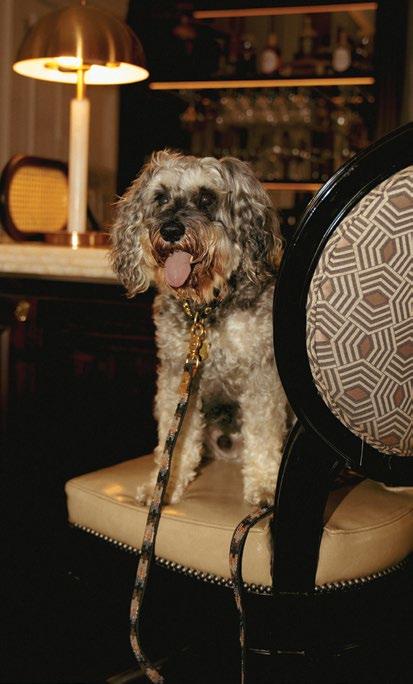
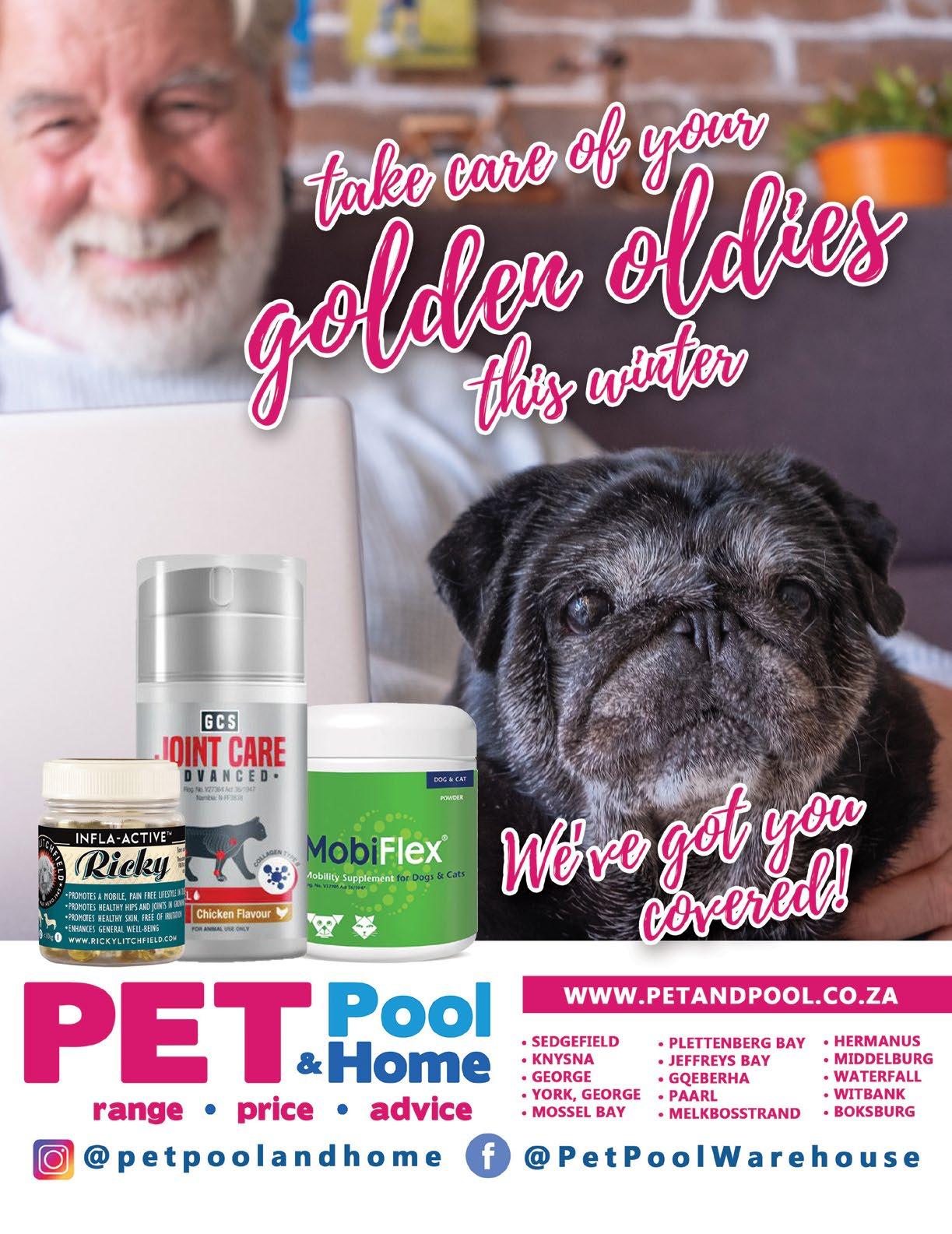
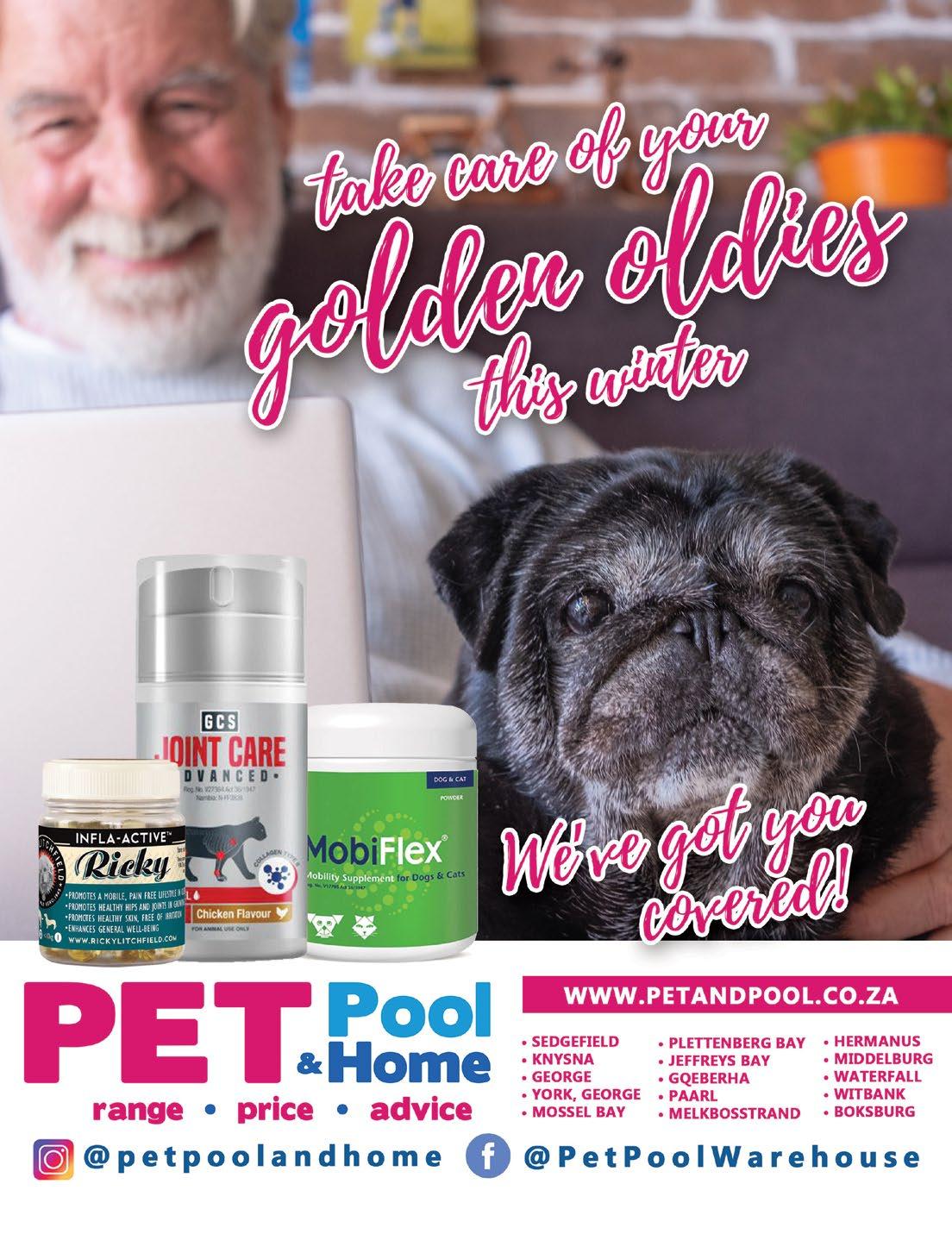

Dr. Egbert Compion from

To this day, Dr Egbert Compion still considers achieving a degree in veterinary science as extremely fortunate. He simply did not consider any other occupation and set his sights on becoming a veterinarian at a very young age.
Egbert grew up in the Northern Suburbs of Cape Town and matriculated from Tygerberg High School in 1992. While all his school friends enrolled for various courses at Stellenbosch, UCT and the Cape Technicon, he packed his bags for the unknown culture shock known as Pretoria! He qualified as a veterinarian in 1999 and, as was customary at the time, joined a practice in the United Kingdom. Over the next 7 years, he travelled between Kent, Lancashire and, eventually, London. It was during this period when he met his wife, a farm girl all the way from McGregor in the Cape Winelands.
Egbert and Mariette got married in 2004 and returned to Cape Town in 2006. He opened and managed an after-hours emergency clinic in the Northern Suburbs and in 2011 joined the Wellington Animal Hospital Group. Today, he is one of the clinical directors in the group of 4 practices and two
veterinary retail centres situated in Wellington, Paarl and Franschhoek.
On one fateful day, at the age of 10 years old, Egbert caught a small snake on the way back from school. He eagerly searched through his book collection and identified it as a blind snake, not particularly exciting as far as snakes go, but that was it, from there on a life-long passion for anything reptile would ensue. Through keeping, studying, breeding and photographing snakes, he has built a keen interest and understanding of these wonderful, shady characters. This naturally developed into treating them as patients and he sees a varied mix of exotic pets at the clinic.
If he’s not at work, Egbert spends his time with his wife, son, daughter, two dogs, cat, chickens, snake collection and whatever wild animal needs rearing or saving at the time. Should this not be an option (teenage kids don’t always feel like spending time with the ‘ou toppies’!) he always has his large bonsai collection to keep him out of trouble. He enjoys photography, hiking, camping, diving and a good laugh with friends.
Our Green grass scented puppy training pads are specially made from top-quality absorbent materials which will absorb your puppy’s urine quickly and effectively;
M-Pets Avocado maxi pack cleaning wipes are disposable moist wipes that help soothe and calm irritated skin while removing unwanted odours, dirt and dander.
They can be used to gently clean your dog’s paws, coats, noses, teeth, bottoms and other areas.
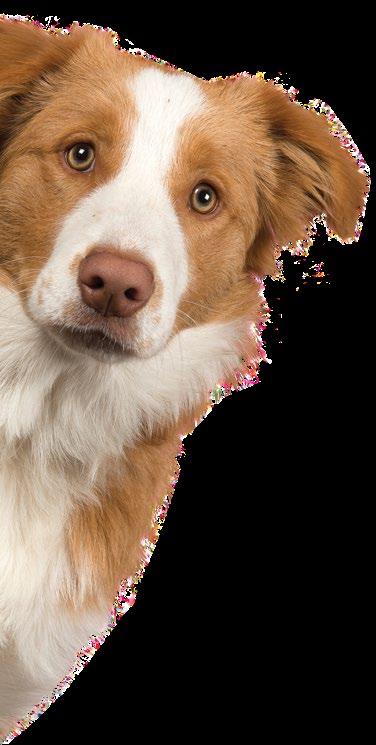
STAND A CHANCE TO WIN A 3 MONTH SUPPLY OF
To enter: Follow @petprintsmag and @mpets_za & comment with your puppies favourite “SPOT” Remember to add the hashtag #whennaturecalls
Closing Date: 30 April 2024







LiLa
Lila loves to sleep under blankets. She is a rescue from GRACE Animal Sanctuary - 170-288 NPO. Her birthday is on Tuesday the 6th of June.
- Lise Du Toit





Diego is a stray that has won my heart. He is my best friend , my personal stress reliever. Would love to win this for him - Malarie Pather



My Bella. Saved from deathrow and now our angel. Rescues are sooooo special, appreciative and loving - Lynette Morgan

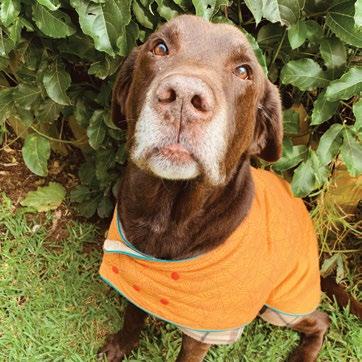

Did someone say “Peanut Butter”???
This is Tiny. He was one of 4 puppies that I fostered, along with his mom, when they were surrendered to SA MAST in Khayelitsha in March 2020. I kept him and mom. Major foster fail -
Linda Franklin Buckle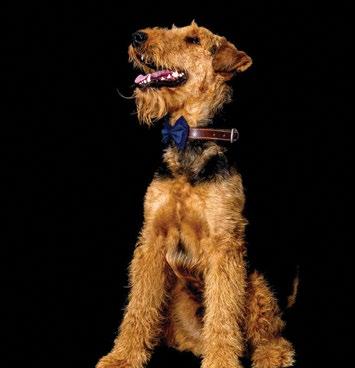
Rocky is the cutest boy you ever did see. He loves all adventures and does anything for food. He loves to get your attention by his little nibbles on you. We would love new walking gear.
- Kaitlyn woods
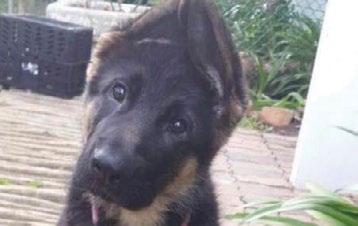
Little Alejandro wearing a pink collar and thinking about eating the rose bush. Don’t get the idea he was a destructive puppy - he was just very energetic and entertaining.
- Leanne DollmanWRITE TO US AND STAND A CHANCE TO WIN ONE OF OUR LIFETIME GUARANTEED TAGS
PET PRINTS WILL SELECT ONE ENTRY PER ISSUE TO WIN THE PRIZE
Red Dingo, Australia, have been producing the ultimate pet accessories since 2001 and are now available in South Africa. Their products are tough and built to outlast any pet adventure. Red Dingo offers hundreds of Pet ID Tag designs for every type of dog or cat.
Available in pet, vet and online stores across South Africa. If your local store doesn’t stock Red Dingo please visit us at www.reddingotags.co.za
Follow us on Facebook and Instagram #RedDingoTagsZA Proudly Distributed by Meelo (PTY) LTD
 BURGER
BURGER
Balancing the demands of a flourishing music career with the responsibilities of family life is a delicate art that South African pop/rock sensation Francois van Coke has mastered over the years. In a candid interview, Francois shares insights into how he navigates the ebbs and flows of fame while staying grounded in the warmth of family.



When Francois agreed to do this interview, I was obviously beside myself. Not just because he is such an icon in South African music, but because he is genuinely one of the most authentically kind people you will ever have the pleasure of meeting. The rock star who has made a name for himself by being the ultimate anarchist is everything you want to meet in a celebrity. He is witty, charming and adventurous but also patient, friendly and down to earth. With a growing family, Francois has also grown as an artist and person. His family being the centre of his universe, Francois delves into what it’s like to be a father of two while still pursuing his passion.

Francois reflects on the challenge of juggling life on the road with the longing to return home to his family. “Balance is the key,” he muses. “I met my wife when I was already deeply entrenched in the music scene, traveling far and wide to share my passion with audiences. While it was exhilarating in my younger days, now, with a family of my own, the pull of home is stronger than ever.” He emphasizes the importance of quality time with loved ones, acknowledging the evolving nature of his priorities with age and experience.
“Being in my 40’s now, every moment away feels like a mission to get back home as quickly as possible.”
Reflecting on his upbringing, Francois underscores the significance of unconditional love instilled by his parents. “My parents loved me unconditionally, and that’s a value I strive to impart to my children,” he shares. Amidst the whirlwind of fame and creativity, family remains the cornerstone of his existence.
Introducing Buddy, the lovable Golden Retriever who has woven himself
seamlessly into the fabric of the van Coke family. Francois beams as he describes the endearing bond between Buddy and his children. “Despite the initial complexities of adding a puppy to a household with two kids, Buddy has become an integral part of our family dynamic. My son Max considers Buddy his best friend, while my daughter Alex is utterly enamoured with him.” There is no doubt that Buddy is a cherished member of the van Coke clan.
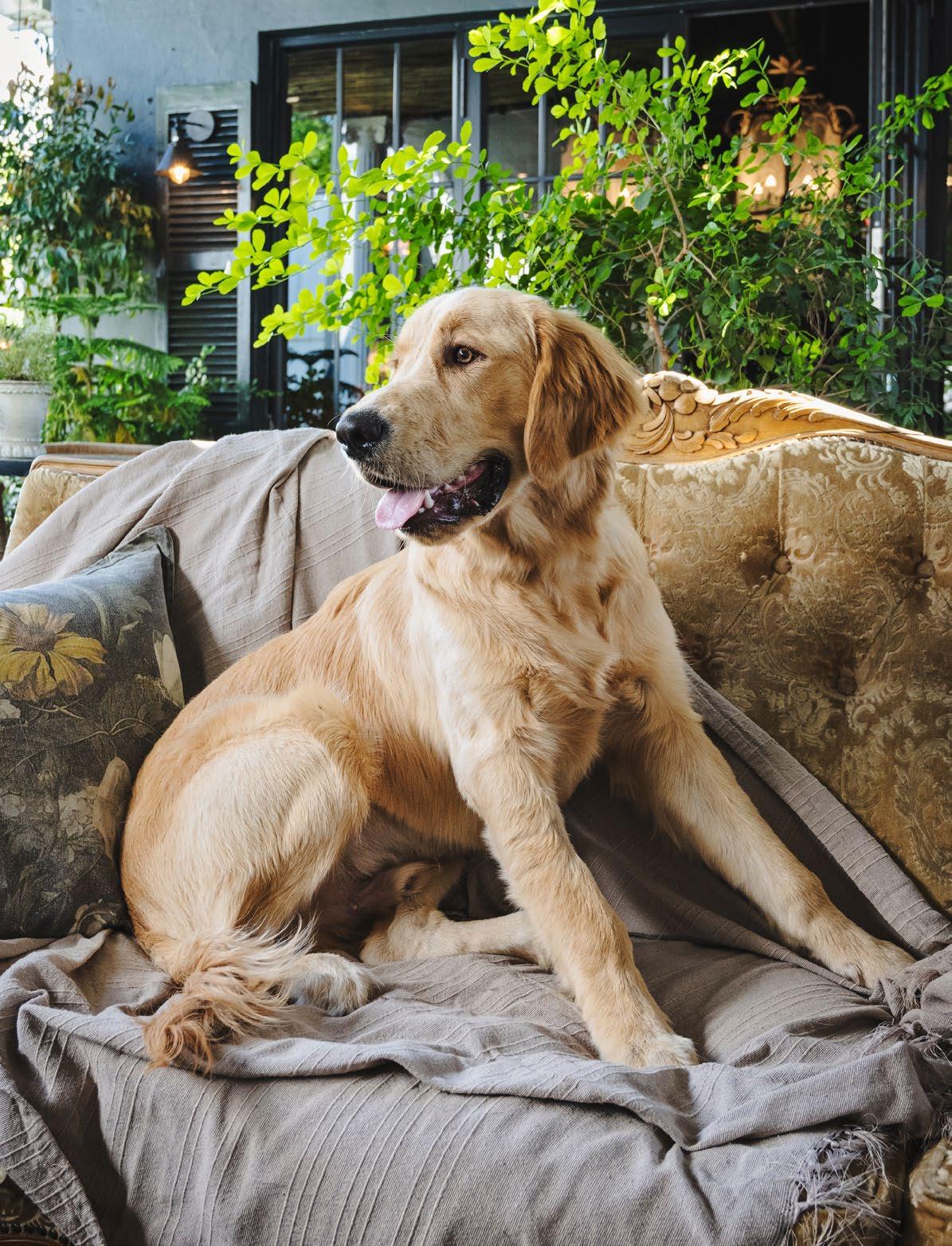
Managing the delicate equilibrium between touring commitments and family life requires meticulous planning. “Balance remains paramount,” Francois reiterates. “While touring is essential for my livelihood, carving out precious moments with my family is non-negotiable.”
Through structured routines and open communication, Francois endeavours to honour both his professional and personal obligations.

Expanding upon his touring experiences, Francois delves into the challenges and rewards of life on the road. From navigating unfamiliar cities to immersing himself in diverse cultures, he finds inspiration in the myriad experiences that fuel his creativity. However, amidst the thrill of performing for adoring fans, Francois remains steadfast in his commitment to returning home to his loved ones, grounding himself in the comforting embrace of familial love.
Francois acknowledges the unwavering support of his wife as a cornerstone of his success. “My wife is my biggest fan and harshest critic,” he chuckles. “Her support, coupled with the understanding of my children, fuels my artistic journey.” His loved ones serve as both pillars of strength and sources of inspiration. From providing invaluable feedback on new music to offering encouragement during moments of doubt. The support they provide is exactly what everyone strives for.
While Francois has scaled back on sharing personal snippets on social media, Buddy still manages to capture hearts with his endearing antics. “Though Buddy may not be as prominently featured as my previous dog, Ringo, there’s a niche fanbase that delights in his adventures,” Francois shares with a hint of pride.
At nearly a year old, Buddy exudes charm and charisma, characteristic of the Golden Retriever breed. “We were drawn to Golden Retrievers for their easy-going nature and suitability as family pets,” Francois explains. “Buddy embodies these traits effortlessly, with his friendly demeanour and endless patience with the kids.”
While Buddy may have outgrown his mischievous phase, Francois fondly reminisces about the havoc wreaked during his
puppy days. “From digging up the yard to unravelling pipes and cables, Buddy kept us on our toes,” he laughs. “Thankfully, he’s mellowed with age, much to our relief!”
With Golden Retrievers you can always count on some kind of entertainment. If they aren’t ducking into a dirty pool of water, you can be sure they will find something to turn into a toy.
With past experiences featuring his pets in music videos, Francois remains open to the idea of Buddy making a cameo appearance in the future. “If the right opportunity presents itself, Buddy might just steal the show,” Francois teases, hinting at the possibility of their beloved furry friend gracing the silver screen once again.
In an industry teeming with glamour and adulation, Francois finds solace in the grounding force of family and humble beginnings. “My family keeps me grounded,” he affirms. “In a South African music scene where camaraderie reigns supreme, there’s little room for egos or delusions of grandeur.”
Raised in an environment that values humility, the limelight has done very little to affect this star’s ego. Francois stops to greet and chat to anyone who is friendly and polite.
Francois humbly acknowledges the profound impact his music has had on listeners’ lives. “Receiving messages from fans about how my music has provided solace or motivation is incredibly humbling,” he shares. “It’s a reminder of the power of music to heal and inspire.”
For Francois, artistic integrity lies in remaining true to oneself amidst evolving circumstances. “As an artist, it’s essential to evolve while staying anchored to one’s core values,” he emphasizes. “By creating music that resonates with my truth, I endeavour to maintain my artistic integrity.”
“I think the public sometimes see you differently than what you see yourself,” he muses. “And also, some people expect you to stay the same, but things change over 20 years, and over my 20-year career, I’ve definitely changed a lot.” He stresses the importance of staying true to oneself and evolving with honesty. “I think the most important thing to maintain artistic integrity is to make music that you want to make and to be honest with yourself and who you are at this moment right now,” This down-to-earth insight highlights his commitment to staying genuine and authentic in an ever-changing industry.
To aspiring musicians grappling with the dual demands of family and career, Francois offers sage advice. “Manage your time wisely,” he advises. “Success in both realms necessitates dedication and balance. Invest in your craft, but never at the expense of cherished moments with loved ones.”
In the symphony of life, Francois van Coke strikes a harmonious chord, seamlessly weaving together the realms of music, family, and furry companionship. Through his firm commitment to authenticity and love, he reminds us of the enduring power of connection amidst the tumult of fame and fortune.



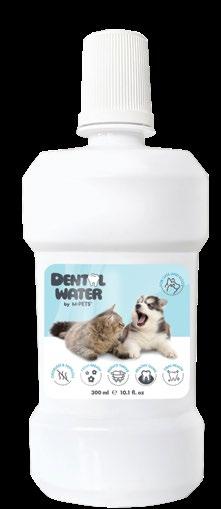
This Dental Water is a must have. Odourless & tasteless, this will improve oral hygiene and freshen your pet’s breath, reduce tartar and encourage healthy gums
www.valemount.co.za
 by Bryony Van Niekerk
by Bryony Van Niekerk
Hello, my name is Bryony and I suffer from dog mom guilt. I feel guilty if we don’t go on a walk everyday (even if there is a literal flood). I feel guilty for leaving my dogs alone when I need to go out. I feel guilty for feeding them ‘junk food’ on occasion. I feel guilty for not being able to provide equal attention to everyone in my multipet household. I feel guilty for sitting here in my office writing this article while my dogs lie at my feet. Honestly the list could go on and on.
Mom guilt is the term used to describe the feelings one gets for not living up to, or meeting one’s expectations as a parent. Whether you are a human mom, cat mom, dog mom, bird mom, fish mom or plant mom- mom guilt is real.
It is human nature to want to be the best parent- have it all, do it all and make it look as easy and effortless as those bloggers on social media. But the reality is, we often can’t. We fall short. And that’s where the guilt comes in.
These feelings are completely normal. It does not make you less than. Perhaps there are areas that you can work on and that is also okay. There is always room for improvement and once you know better, you can do better. So cut yourself some slack (and a piece of cake) and read on to see how you can start to live a more guilt-free life.
Setting realistic expectations for not only yourself but for your pets is the key to setting yourself up for success. Decide what you would like to achieve in a day or a week with your pet- do you want to go on daily walks, make your pet home cooked meals, or perhaps even start training. Then figure out how these activities can fit into your schedule and how much time you can devote. There is no point in deciding you want to go on hour long daily walks with your dog but in reality, you only really have about 30 minutes in the afternoons. Failing to meet these unrealistic expectations is a sure way to open the guilty feeling floodgates.
Start with small, achievable goals and once they become
part of your routine, you can build onto them.
Like most things in life, quality is better than quantity. I would much rather have a small amount of decadent chocolate, than 10 slabs of waxy cooking chocolate. The same can be said for the time spent with your pets. What you do with your pets is far more important than the amount of time.
Make sure that whatever time you have set aside for your pets is meaningful and that it something that they enjoy as well. If you have limited time, don’t do heelwork when your dog’s favourite game is chasing balls. Similarly, if you go for a walk, allow your dog to be a dog and sniff. Don’t spend that time dragging them or getting impatient/angry because they want to stop at every bush.
Whatever you choose to do, be fully present and engaged. Talk to them, praise them and put all your focus on them.
Our pets thrive on routine. While they can’t tell time in the conventional sense, their circadian rhythms enable them to be able to predict when certain activities will happen. For instance, I don’t need a clock to tell me when its 3 pm because all my cats just magically appear in the kitchen at that time waiting for dinner. Similarly, Ollie gets really
restless and excited around 5 pm because that’s when we go walking.
The guilt creeps in here when we have to change these routines. Perhaps you changed jobs and the hours are longer, maybe you now have to go back into the office, or perhaps you just had a baby. These life changes can result you no longer being able to walk your dog at 5 pm, or give them the undivided attention that they are used to.
The good news is that our pets are adaptable. If you know that big changes to your scheduling are coming up, slowing start preparing your pets for it in advance. Adjust their routines bit by bit so that when the time comes, your pets have already adjusted and settled into their new norm.
As much as we want to do it all, sometimes it just isn’t possible. It is perfectly fine to source some outside help. If you work long hours, or are physically drained, there is no shame in hiring a dog walker to walk your dog a few times a week. Or perhaps you get a sitter to come and hang out with your pets if you will be away for more than 8 hours a day. Or maybe you buy the frozen dog food from Woolies because some nights you can’t face cooking? By seeking help, you can alleviate some of that guilt, so that when you do get home, you can shamelessly lie on the couch enjoying some quality snuggles, knowing that your pets needs have been taken care of.


The day that you decide to open your house, heart and life to ‘Snookum’s’ the Toy Poodle you are overjoyed with happiness, excitement, and just can’t wait for your first adventure together. But did you stop to think about the grooming requirements for her curly coat?
Most dog owners do not think about how to maintain their dog’s coat before they welcome them into their homes but are only overwhelmed by those cute puppy eyes and wagging tails. This way of thinking is one of the reasons why so many dogs end up in shelters as the owners never realized how bad Sheila, the Husky’s shedding could be.
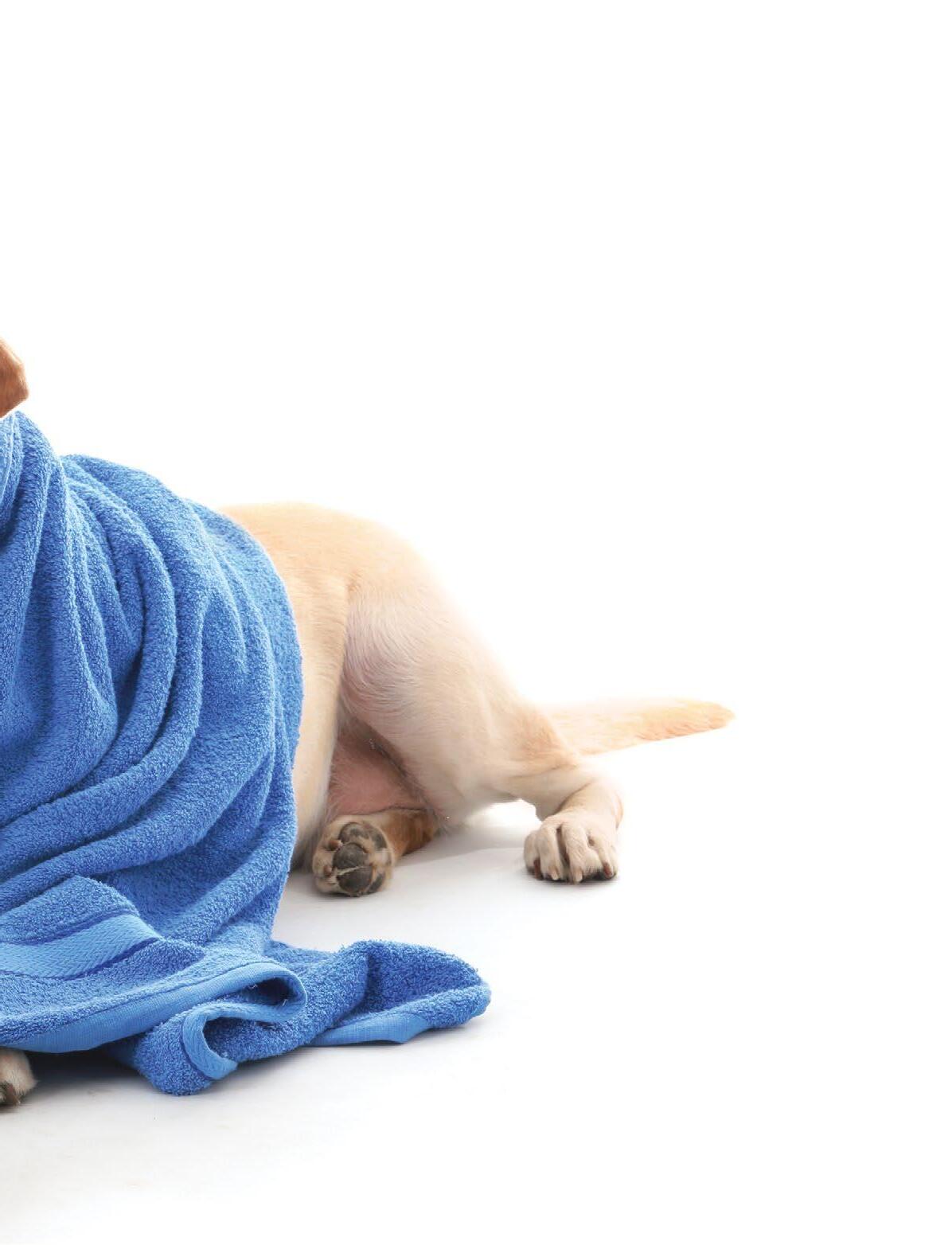
Grooming should not only happen once a year, as it plays a vital role in your pup’s life. As responsible pet owners, it is our duty to ensure their overall well-being, and one crucial aspect of their care, is grooming. Beyond merely maintaining their appearance, regular grooming plays a vital role in promoting your dog’s health and happiness. Let’s delve into the reasons why grooming your dog is essential for their physical and emotional well-being.
Regular grooming contributes significantly to the health of your dog’s skin and coat. Brushing removes dead hair, dirt, and debris, preventing matting and tangling. Mats form when tangles are not brushed out and they just keep growing, trapping more fur and winding tighter and closer to the dog’s skin. In simpler terms, a mat is a tangle/knot on steroids. If left unattended it can form a tight pelt against the skin. The skin cannot breathe and this can lead to skin infection or hot spots developing. A severely matted coat can potentially cut off the blood supply to certain areas of the dog’s body, causing that area to become bruised. These mats can constrict blood vessels, leading to reduced blood circulation to the skin and underlying tissues which can become lifethreatening for the dog.
Regular grooming not only keeps your dog looking clean and well-groomed, but also promotes better air circulation, reducing the risk of skin infections and irritation. Additionally, grooming, like brushing your dog’s coat helps distribute natural oils, keeping the coat shiny and healthy.
Grooming sessions provide an excellent opportunity to detect any potential health issues early on. By examining your dog’s body, you can identify lumps, bumps, rashes, or signs of infection. Regular ear cleaning, nail trimming, and dental care during grooming also contribute to preventing common health problems such as ear infections, overgrown nails, and dental issues. Did you know that overgrown nails can contribute to joint problems and affect your dog’s posture? The altered gait caused by long nails may put additional stress on the joints, potentially leading to issues such as arthritis over time. Maintaining proper nail length is crucial for preserving a dog’s overall musculoskeletal health.
Regular grooming can contribute to treating allergies. Dogs with allergies have sensitive and sometimes itchy skin. For example, the use of oatmeal shampoo will have a soothing effect on irritated skin. Some owners are allergic to dander/dead skin flakes and by frequent bathing, dandruff will be reduced, keeping the owners’ allergies at bay.
Grooming is not just a practical necessity but also a chance for bonding between you and your furry friend. Spending quality time grooming your dog strengthens the emotional connection and trust between you. Dogs become relaxed by repetitive motion and stimulation when being brushed or washed. By frequent grooming, your dog will get used to the process and start to enjoy it, especially if there is a healthy treat waiting at the end of the session. Moreover, it helps accustom your dog to being handled, making future vet visits or medical treatments less stressful. A well-groomed dog is generally happier, more comfortable, and less prone to anxiety or behavioural issues.
Certain dog breeds, such as your doublecoated breeds, are more susceptible to temperature extremes, and grooming plays a role in helping them regulate their body temperature. During warmer months, removing excess undercoat through grooming helps prevent overheating, while in colder months, a well-maintained coat provides insulation against the cold. For this reason, it is very important to note that you should never shave a double-coated breed, like a Husky, Pomeranian or Francois van Coke’s Buddy, the Golden Retriever, as you are robbing the dog of its natural temperature regulation system and will damage the coat. During our Dog Groomer Assistant course, we cover various coat types and how to groom them for those who would like to learn more about this topic.
Regular grooming is crucial for preventing and detecting parasites such as fleas and ticks. A clean and well-groomed coat makes it easier to spot these unwelcome guests, allowing for prompt treatment. Additionally, routine grooming involves checking for other pests like mites and lice, ensuring your dog and family stay comfortable and healthy.
Grooming allows the dog to be comfortable. Mats normally form where there is a lot of friction, for example under the armpits, between the back legs and so on. Imagine having a tight pelted mat underneath your arm, would you feel comfortable going for a run? Or wearing a thick matted coat during the hot summer months? Dogs
with overgrown nails may experience difficulty walking and moving around. Long nails can alter the natural alignment of the paw, making it challenging for the dog to distribute its weight properly.
Regular grooming helps control odours, reduces shedding, and prevents the accumulation of dirt and debris, ensuring a clean and pleasant living environment for both you and your dog.
A pup that’s clean and smells like a breath of fresh air is bound to steal the spotlight over a stinky sidekick!
wiry texture, while double-coated breeds require the removal of excess undercoat to prevent overheating. Recognizing these unique requirements ensures that your dog not only looks great but also stays healthy and comfortable.
Clearly, grooming involves more than simply brushing your dog’s coat; it encompasses a range of comprehensive care practices tailored to your pet’s individual needs.
Essential grooming practices that benefit all dogs include the following:
• Brushing the coat at least once a week; daily brushing is necessary for double-coated breeds.
• Regular bathing is recommended at least once a month. To maintain a healthy coat and skin.
• Nail clipping every four to six weeks to maintain healthy conditions.
• Brushing the teeth, yes you need to brush those pearly canines, to prevent tartar buildup, which can lead to gingivitis and pose serious health risks.
• Cleaning the ears to prevent ear infections, especially crucial for breeds with long ears like Cocker Spaniels.
• Removing excess undercoat and dead hair to promote skin health and prevent overheating.
• Clipping the coat according to breed standards to achieve the desired look and avoid resembling characters like Chewbacca from Star Wars.
Just as each individual is unique, dogs also possess distinct characteristics that make them special. One significant aspect to consider when caring for your furry friend is their coat type. Dogs come in various breeds with different coat lengths and textures, ranging from short and smooth to long and curly.
Certain breeds, like Poodles, Shih Tzus, and Maltese, demand more frequent grooming sessions due to their long and dense hair. On the other hand, short-haired breeds like Beagles or Boxers may require less frequent attention. To ensure your dog receives the care it deserves, it’s crucial to understand their specific grooming needs based on both their breed and coat type.
Moreover, grooming extends beyond mere brushing. For instance, wire-coated breeds benefit from hand-stripping to maintain their
THESE BASIC GROOMING NEEDS ARE FUNDAMENTAL FOR MAINTAINING YOUR DOG’S HEALTH AND APPEARANCE.

Grooming frequency
Sure, we understand the importance of grooming, but how often should ‘Snookems’ visit the groomers? The frequency of grooming can be determined by considering the following factors:
Breed and Coat type - An obvious deciding factor is the coat type; however, it is not as simple as that! Shorter
cleanliness.
Age - The age of your dog can also influence grooming frequency. Puppies may require more frequent grooming as they go through their initial growth stages and become accustomed to the grooming process. Older dogs may have specific grooming needs, such as dental care or extra attention to arthritic joints.

It’s crucial to assess your dog’s individual needs and create a grooming schedule that suits both you and your furry companion. Regular observation and responsiveness to your dog’s grooming requirements will help ensure their coat and overall health are well-maintained.
At The Professional Dog Grooming Academy, the heart of our mission lies in a dedication to educating not only dog groomers, but also dog owners and enthusiasts about complete dog care. Our curriculum is meticulously designed to cover a wide spectrum of topics, including grooming, health, handling, training, safety and overall well-being. Our ultimate goal is to offer a comprehensive education that nurtures a deep understanding of canine care and safety.
If you enjoyed today’s article, then our minicourses, which we specially created for dog owners and lovers will tickle your fancy. Visit www.pdga.online to view the variety of courses we have to offer. As we are in a fetching mood, we would like to give the Pet Prints readers a 15% discount coupon code to use on any of our




In the ever-evolving field of veterinary care, a burgeoning discipline is gaining recognition for its transformative impact on the well-being of our beloved fourlegged companions. Enter veterinary physiotherapy – an integral component of comprehensive pet healthcare that focuses on enhancing mobility, reducing pain, and improving overall quality of life. Let’s delve into the ABC’s of Veterinary Physiotherapy to uncover the wonders this field holds for our furry friends.
Veterinary physiotherapy centers on understanding the intricate anatomy of animals and leveraging specialized techniques to address musculoskeletal issues, rehabilitate injuries, and manage chronic conditions. This science-backed approach employs a variety of methods, including manual therapy, therapeutic exercises, and modalities such as ultrasound and hydrotherapy.
The spectrum of pets that can benefit from veterinary physiotherapy is broad, ranging from aging and arthritic animals to those recovering from surgeries or suffering from neurological disorders. It’s not just limited to dogs and cats; horses, rabbits, and exotic animals also stand to gain from tailored physiotherapy interventions. Whether it’s a sprightly puppy with boundless energy or a senior cat facing mobility challenges, veterinary physiotherapy is designed to meet the unique needs of each individual patient.
Veterinary physiotherapists offer a plethora of services aimed at promoting the physical well-being of animals. These include:
1. Rehabilitation Programs: Tailored exercise regimens to improve strength, flexibility, and coordination post-injury or surgery.
2. Pain Management: Techniques such as massage and electrotherapy to alleviate pain and discomfort associated with various conditions.
3. Hydrotherapy: Controlled aquatic exercises to build muscle strength and improve joint mobility, especially beneficial for conditions like arthritis.
4. Orthopedic Assessment: Thorough examination of musculoskeletal issues to identify and address the root cause of mobility challenges.
5. Neurological Rehabilitation: Specialized programs for pets with neurological conditions to improve balance, coordination, and motor skills.
Veterinary physiotherapists are highly trained individuals with a deep understanding of animal physiology. They work collaboratively with veterinarians to create personalised treatment plans, ensuring a holistic approach to pet care. These professionals are equipped to educate pet owners about at-home exercises and lifestyle modifications that can support their pet’s ongoing wellbeing.
As the field of veterinary physiotherapy continues to gain prominence, pet owners are increasingly acknowledging its potential to enrich the lives of their furry companions. The ABC’s of Veterinary Physiotherapy emphasize the significance of a comprehensive and personalised approach to pet health, highlighting how this discipline contributes to a more active and improved future for animals of all shapes and sizes.

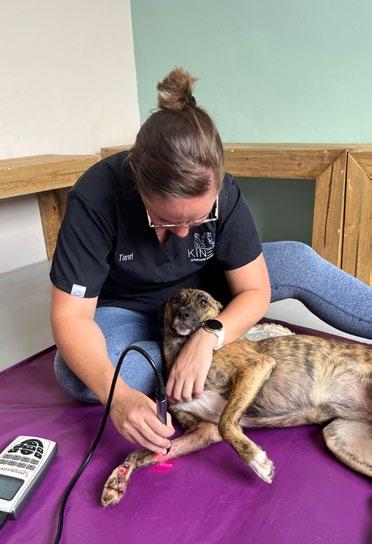

Gut health in dogs is a hot topic at the moment, with dog owners becoming more aware of what their dogs are consuming and the benefits inferred by these foods. Various dog food brands are also placing a lot of emphasis on differentiating themselves in the market by promoting foods as ‘gastrointestinal’ or adding additional additives such as probiotics or prebiotics to the dog food. So what does this all mean and why is it important?
Dogs are susceptible to digestive upsets throughout their life cycle. When the puppies are still with their mother, they have some immune protection from her milk. However, when they are weaned, they are vulnerable to digestive
disturbances as a result of stress and exposure to different nutrition, and their new environment. It is therefore important to provide these puppies with a highly digestible food in this early phase, to ensure they are getting adequate nutrition.
It is also important to establish a healthy microbiome in these young animals. When the puppies are with their mother, there is some transfer of her good bacteria to the puppies, but unfortunately this may not last for a very long time. Therefore we need to support the development of a healthy microbiome that is able to withstand the changing environments which they are facing.
Similarly, as the puppies grow up and begin to explore their environment, they run the risk of consuming harmful bacteria which may result in an emergency visit to the vet. Dogs are notorious for eating things that they shouldn’t, especially during their walks in the park. The presence of beneficial

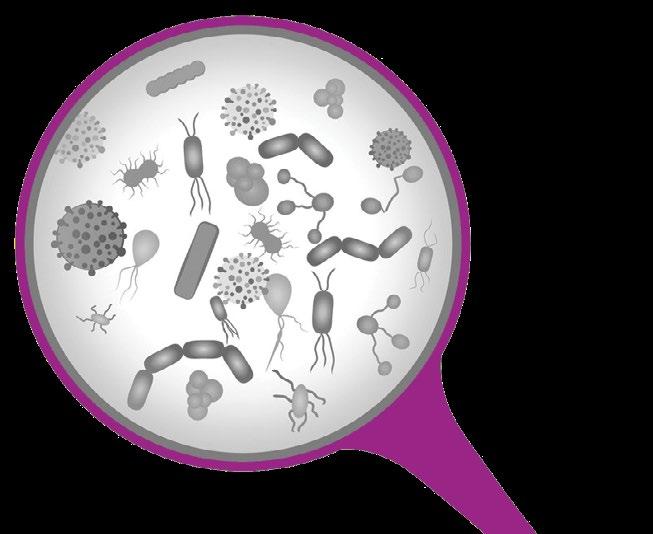
pathogens taking over in the intestine and making the dog sick. It is possible beneficial bacteria in the gut in the form of probiotics. Bacillus bacteria are one of these probiotics of
Probiotics need to survive the movement through the gastrointestinal tract and successfully germinate in the dogs’ intestine. This is usually measured as an increase in bacillus bacteria (as seen in the below figure) and a decrease in the levels of coliforms (pathogenic bacteria such as E. coli) in the dogs’ faeces and of course a positive change in the physical consistency of the faeces from the owner’s perception.
As dog owners, we want to avoid costly vet visits for digestive upsets as much as possible. We are certainly able to take some actions to support the gut health of our dogs, from the adequate development of a robust microbiome when they are puppies; to supporting them throughout adulthood, ensuring that they are always protected and prepared for any upcoming challenges.

Rooibos Extract may help to soothe irritated and itchy skin, and the strengthening of brittle and damaged hair.
Aloe Vera is a natural soother and moisturiser. It also helps to neutralise odours.
A rich-lather, pH-balanced shampoo that will gently clean and nourish dry, itchy and allergy prone skin.
Our all-natural and gentle shampoo is specially formulated to support, soothe and rejuvenate your pet’s skin and coat.
Its pH balanced formula, natural ingredients, and calming all-natural aroma helps your pet to feel relaxed and refreshed after every bath.
A blend of natural Lemongrass Essential Oil and Coconut Water provides a refreshing fragrance.

Witch Hazel Extract may assist in reducing topical inflammation.
Coconut Oil has the potential to improve damaged skin and reduce allergens.
Avocado Oil may help to improve the structure of the coat, while promoting growth of new coat as well as providing a protective covering to the coat follicles and skin which can help to prevent moisture loss.
Our Pet and Bedding Spray is formulated with a unique blend of silver nano particles and botanical extracts to help soothe, refresh and rejuvenate your pet’s skin.
Plus, the all-natural aroma will leave your pet smelling clean and refreshed in-between washes, helping to reduce odours in your home.
Keep your pet smelling and feeling their best.
Both products contain a solution of Quantum.Silver, which consists of silver nanoparticles. Silver nanoparticles display anti-inflammatory, anti-viral, anti-fungal, anti-bacterial, and anti-septical properties. Quantum.Silver assists in fighting these skin infections topically. Helping your pet’s skin and coat to stay healthy.
GRASSHOPPERS AND LOCUST BELONG TO THE ORDER ORTHOPTERA, WHICH ALSO INCLUDES CRICKETS AND KATYDIDS.
Locusts are actually species of short-horned grasshoppers.
Grasshoppers existed long before dinosaurs. Fossils date back to the Carboniferous period, which shows that the primitive grasshoppers first appeared more than 320 million years ago.
Grasshoppers sometimes “spit” brown liquid to defend themselves from predators. Some people say grasshopper’s spit “tobacco juice,” probably because grasshoppers have been associated with tobacco crops in the past.
Grasshoppers cause billions of dollars in damage to food crops annually, worldwide. A desert locust swarm in Kenya in 1954 consumed over 200 square kilometers of wild and cultivated plants.
Grasshoppers provide an important source of protein to people in many parts of the world. In Mexico there is a meal of

sauteed grasshoppers called chapulines.
Grasshoppers are classed as medium to large insects and are recognised by their large eyes and brown or green colouring. The length of an adult grasshopper varies between 1cm and 7cm.
Grasshoppers can be found on every continent except Antarctica.
The grasshopper likes warm, dry environments as meadows and fields, and is also found in people’s gardens!
Grasshopper eggs are eaten by beetles.
YOUNG AND ADULT GRASSHOPPERS ARE PREYED UPON BY BIRDS, DRAGONFLIES, RACCOONS, SPIDERS, AND EVEN SMALL MAMMALS.
Grasshoppers have a complex life cycle, with a remarkable ability to undergo metamorphosis
The complete lifecycle of a grasshopper is relatively short, around one year.
ADULT GRASSHOPPERS USUALLY LIVE FOR ABOUT SEVEN WEEKS, DEPENDING ON THE WEATHER.
A female grasshopper can lay hundreds of eggs at a time.
Grasshoppers begin life as an egg which hatch into nymphs in the spring and summer.
NYMPHS ARE YOUNG, WINGLESS GRASSHOPPERS WHICH ARE LIGHTER IN COLOUR THAN ADULT GRASSHOPPERS.
IT TAKES AROUND A MONTH, AND 5 OR 6 MOULTS, BEFORE A NYMPH DEVELOPS INTO AN ADULT WITH WINGS.
Grasshoppers depend on camouflage to avoid detection from predators.
Grasshoppers have natural predators, such as spiders, lizards, rodents, and insect-eating birds.
The hooded Leaf Grasshopper’s camouflage is to look like certain leaves and Stick Grasshoppers mimic wooden sticks.
A Grasshopper’s body is divided into a head, thorax, and abdomen as it is an insect.
Grasshoppers don’t have nests as they travel to find new sources of food.
Grasshoppers have two pairs of compound eyes, which allow them to see multiple images at once and 3 pairs of simple eyes.
THE THREE SIMPLE EYES ARE CALLED OCELLI, WHICH DETECT LIGHT INTENSITY.
Touch and smell are very important to Grasshoppers and so they have a pair of thread-like antennae that are sensitive to these senses.
They have two pairs of wings, one pair is narrow and tough, the other wide and flexible.
SOME MALE GRASSHOPPERS PERFORM ELABORATE DISPLAYS TO ATTRACT FEMALES, INCLUDING WING FLAPPING, LEG WAVING, AND CHIRPING SOUNDS.
Although most species of grasshopper are solitary they sometimes gather into huge groups of millions or even billions.
Most grasshopper species are herbivores that feed on plants, but some are omnivorous or even predatory.
Grasshoppers have a massive appetite! On average, a grasshopper can eat about 16 times its own weight in a single day.
Their favourite foods are plants in the grass family such as wheat, corn, barley and lucerne.
Grasshoppers mate in late summer or fall.
There are over 11,000 known species of grasshoppers.
A small cuticle in a grasshopper’s knee acts as a spring that lets it catapult its body into the air.
Grasshoppers can reach a speed of 13 km/ hour when flying.


predators and other grasshoppers.
In dreams, grasshoppers are seen as symbols of liberty, or the failure to settle down or commit to decision.
In Japan, grasshoppers are a sign of good luck and In Greek mythology immortality.
In the USA, grasshoppers cause damage of around $1.5 billion to crops each year.
Grasshoppers migrate during the winter to find food and warmer climates.
Some grasshoppers can fly short distances, while others can travel long distances by gliding or flying.
tiny hairs that help them stay airborne. The antennae’s are used to sense their environment and communicate with other grasshoppers.
GRASSHOPPERS PLAY A CRUCIAL ROLE IN NUTRIENT CYCLING BY BREAKING DOWN PLANT MATTER AND RETURNING IT TO THE SOIL.
Grasshoppers have appeared in popular culture, from children’s books and cartoons to movies and video games.
THEY HAVE ALSO INSPIRED TECHNOLOGICAL INNOVATIONS, SUCH AS ROBOTS THAT MIMIC THEIR MOVEMENTS OR SENSORS THAT DETECT THEIR SOUNDS.



Your peace of mind in Veterinary practice management

PATIENT MANAGEMENT
DEBTORS CONTROL
STOCK CONTROL
VETSOFT REPORTING
SMS MODULE


2024 has only just begun and already, my year has been filled with problems. My parents refuse to meet my lifestyle demands and my siblings are unable to read or write so they refuse to sign the petitions of complaint I keep preparing in an attempt to address the service delivery problems in this house. The only other ‘friend’ who could help me is Richard the parrot, but he’s demanding money from me which is a problem because, thanks to my tightwad parents, I have a cash flow challenge right now.
I had hoped to manifest myself a millionaire family with a private jet when I was rescued from CLAW, instead I live in a middle-class home devoid of Range Rovers, chauffeurs and chefs where I have to contend with the same kibble presented in a metal bowl twice a day. Seriously, what the actual fluff? I feel like I’ve lost some sort of bet here.
My mother even makes me work! I mean, the audacity! I’ve had to model outfits and play with toys for two photoshoots recently and the only payment I received was treats. Again, WTF? I want cash people; my crypto account isn’t going to grow itself and I have some first-class adventures on my vision board for 2024 that I’m not prepared to compromise on! Also, I know Richard will accept Bitcoin and then maybe I might have more leverage over my fun police parents.

For now. I’ll have to contend with entertaining myself by having mother drive me around in her boring little car so I
Address: Unit12, The Siding, 22 Plantation Road, Ottery
General Email: info@bm.co.za Office Number: 021 704 2720
can silently judge people as they pull up next to us. I take great pleasure in looking down my nose and giving my best snide side-eye to the humans who smile at me. Even better, I like to growl at small humans who admire me through their car windows, little idiots.
On the plus side, I got spotted by one of mother’s clients at daycare last week. She instantly recognised me and got very excited. “Is that Ziggy?” she exclaimed. My staff, who are obviously there to make sure I’m not harassed by eager fans, confirmed her celebrity sighting was correct as I, of course, totally ignored her.
Speaking of recognition, despite the fact that I am obviously the most fabulous rescue dog in South Africa, the Pet Prints team wish to see more of SA’s rescue dogs to fact check. I have been instructed to tell the other rescue dogs reading this to take a selfie and then share it under my portrait on the Facebook page. I’ll review the photos, select my favourite and send them a copy of my Mom’s book (obviously I’m open to Bitcoin bribes).
Yours in hope of Louis Vuitton accessories and crypto. Ziggy







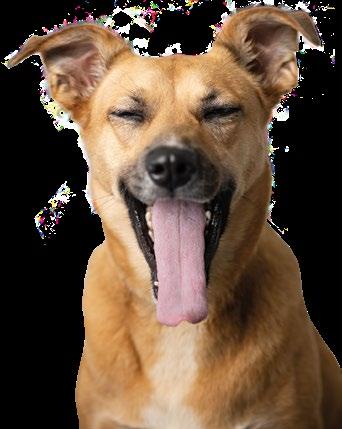
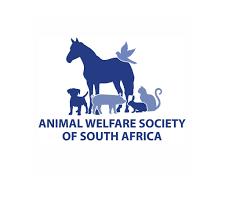

As the sun cast its warm glow over the picturesque landscapes of South Africa, a heartfelt gathering unfolded, resonating with gratitude and admiration. It was a momentous occasion, celebrating 95 years of unwavering dedication, kindness, and transformational impact. The Animal Welfare Society of South Africa, an emblem of hope for countless animals and communities, hosted a luncheon to express profound gratitude to its cherished supporters and to illuminate the remarkable work accomplished with their unwavering support.
TThe ambiance was brimming with appreciation as the welcome message echoed the sentiment of heartfelt thanks to the patrons, volunteers, activists, and compassionate souls who have illuminated the society’s path with their generosity. The message, echoing from the depths of gratitude, underscored the pivotal role played by each supporter, acknowledging their role as the unsung heroes behind every success story.
Among the esteemed supporters recognized were individuals whose selfless contributions have left an indelible mark on the society’s journey. From the benevolent patron, Pamela Isdell, whose generosity has been a beacon of hope, to the visionary leadership of Geordin Hill-Lewis, the Executive Mayor of Cape Town, whose commitment has propelled transformative outreach campaigns, each acknowledgment symbolized a thread in the intricate tapestry of compassion and advocacy.
The luncheon reverberated with the spirit of unity and collective action, epitomizing the essence of community-driven initiatives. It was a poignant reminder that in the realm of animal welfare, every gesture, no matter how
small, contributes to a monumental impact. The youngest ambassador, 12-year-old Riley Valentine, stood as a testament to the power of compassion transcending age barriers, igniting a spark of inspiration for others to emulate.
Amidst the expressions of gratitude, the Executive Mayor, though unable to attend, conveyed heartfelt appreciation for the society’s relentless efforts. His message underscored the profound impact of the society’s initiatives, resonating with his personal connection as a dog owner, and emphasizing the significance of adoption programs in nurturing loving homes for animals in need.
As the luncheon unfolded, it provided a glimpse into the multifaceted endeavors undertaken by the Animal Welfare Society of South Africa. From sheltering abandoned animals to providing vital veterinary services, prosecuting cruelty cases, and conducting outreach programs, the society’s footprint extended across the vast expanse of the Cape Metro, leaving an indelible mark of compassion and care.
The society’s hospital emerged as a beacon of hope for indigent pet owners, offering roundthe-clock care and life-saving interventions. Through its rescue, rehabilitation, and rehoming initiatives, it endeavoured to unite stray animals with loving families, ensuring their journey from abandonment to cherished companionship.
At the heart of the society’s mission lay its inspectorate, tirelessly combating cruelty and neglect, and advocating for the rights of voiceless animals. Through proactive education initiatives and outreach projects, the society endeavoured to foster a culture of compassion, enriching communities and nurturing responsible pet ownership.
Central to the society’s ethos was the commitment to sustainability, manifested through innovative social enterprise initiatives, strategic partnerships, and meticulous monitoring and evaluation. It was a testament to the society’s unwavering resolve to ensure the longevity of its mission, transcending temporal boundaries and leaving a legacy of compassion for generations to come.
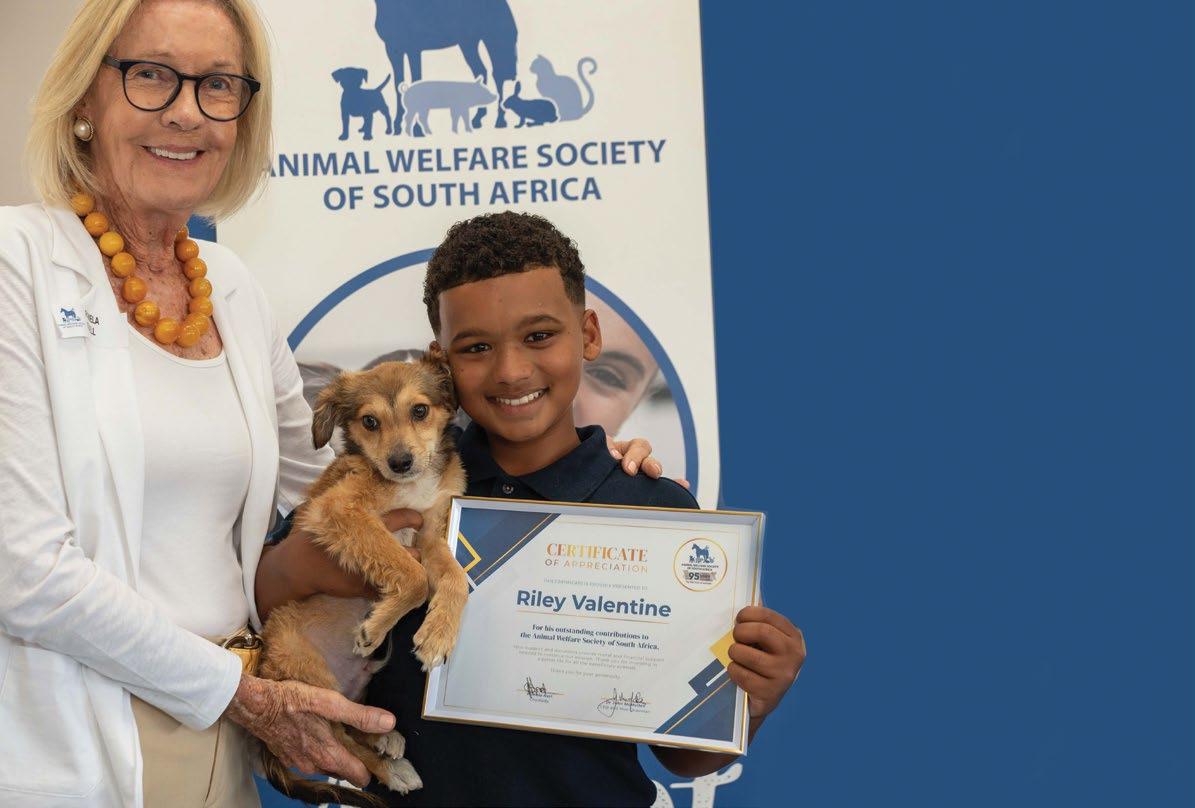

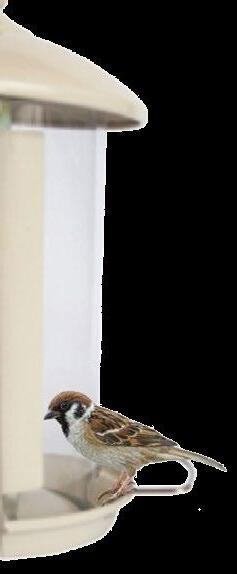
In conclusion, as Allan Perrins, the Head of Communications, Resource Development & Fundraising, extended gratitude to the society’s supporters, the luncheon culminated with a reaffirmation of the profound impact of collective action and unwavering compassion. It was a celebration of 95 years of resilience, empathy, and transformational change, paving the way for a future where every animal is embraced with love and dignity.
As the curtains drew on the luncheon, the echoes of gratitude lingered in the air, a poignant reminder of the enduring legacy of compassion forged by the Animal Welfare Society of South Africa. It was a testament to the power of collective action and the transformative potential of unwavering kindness—a legacy that continues to illuminate the path towards a brighter, more compassionate future for all beings.

FEED YOUR FEATHERED FRIENDS IN STYLE - IT’S A WINGDING DEAL FROM BIZZIBABS ONLINE STORE.
Spruce up your outdoor space with Westerman’s Wall Bird Seed Feeder to host a wild bird party day after day. This feeder easily attaches to a wall and it’s easy to fill with loose seed. Size 28x16.5cm. One colour only - beige.
And, there is more. Add a bag of 5kg or 10kg Westerman’s top-notch seed mix. Seed boasts yellow and red millet, red sorghum, and finely crushed maize. A super combination for attracting a diverse range of birds into your garden. Grab 1 x wall bird feeder plus 5kg seed for R350 or 1 x wall bird feeder plus 10kg seed for R400. Hurry, while stocks last!
www.bizzibabs.com

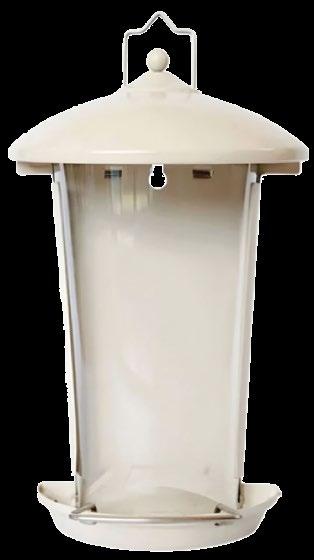

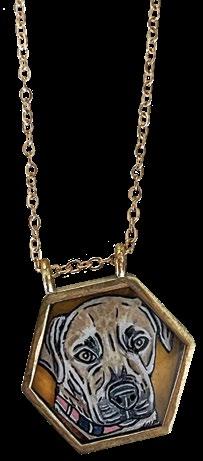
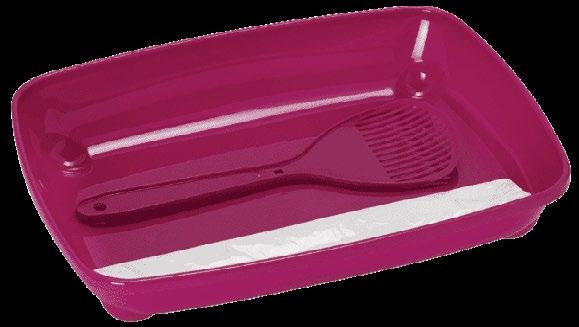




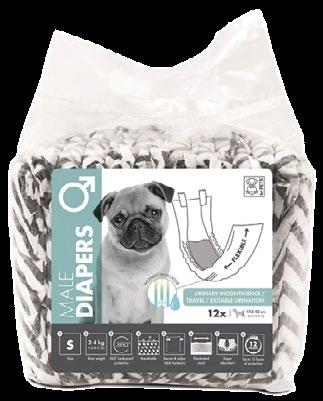








even serious health complications if left untreated. In this article, we’ll explore the importance of dental health for pets and provide practical tips for maintaining their pearly whites.

Proper dental care is essential for pets to ensure their overall well-being. Dental issues such as plaque buildup, tartar accumulation, gum disease, and tooth decay are not uncommon among dogs and cats. These conditions can cause pain, difficulty eating, bad breath, and in severe cases, may even lead to systemic health problems affecting the heart, liver, and kidneys.
Just like humans, pets benefit greatly from regular brushing. Use a soft-bristled toothbrush and pet-safe toothpaste to gently clean your pet’s teeth. Start slowly, allowing your pet to get used to the sensation, and gradually increase the frequency. Aim to brush your pet’s teeth at least two to three times a week to remove plaque and prevent tartar buildup.
Therefore, maintaining good dental hygiene is vital to prevent such issues and promote a happy, healthy life for our furry companions.
Maintaining good dental health is crucial for ensuring the overall well-being and longevity of our beloved pets.
Chewing on appropriate toys can help remove plaque and massage your pet’s gums, promoting better dental health. Look for dental chew toys specifically designed to support oral hygiene. Chew toys made of rubber or nylon can be beneficial for both dogs and cats, but always ensure they are safe and durable.
There are various dental treats and specially formulated pet foods available on the market that can help maintain your pet’s dental health. These products are designed to reduce plaque and tartar buildup while providing essential nutrients for overall well-being. When selecting dental treats or food, opt for those approved by veterinary professionals and consider your pet’s specific dietary needs.
Routine veterinary examinations are essential for monitoring your pet’s dental health. Your veterinarian can perform a thorough oral examination, detect any dental issues early on, and provide appropriate treatment or recommendations. Additionally, professional dental cleanings may be necessary to remove stubborn tartar and ensure your pet’s teeth and gums are healthy.
As a pet owner, it’s essential to be vigilant and watch for signs of dental problems in your furry friends. Symptoms such as bad breath, swollen or bleeding gums, difficulty chewing, excessive drooling, or changes in eating habits could indicate underlying dental issues that require attention. If you notice any of these signs, consult your veterinarian promptly for proper diagnosis and treatment.
Maintaining good dental health is crucial for ensuring the overall well-being and longevity of our beloved pets. By incorporating regular brushing, providing dental chew toys and treats, offering appropriate pet food, scheduling routine veterinary checkups, and being attentive to signs of dental problems, pet owners can help keep their furry friends’ smiles bright and their tails wagging with joy. Remember, a little extra care for your pet’s teeth today can go a long way in ensuring a healthier tomorrow.
Common Dental Conditions in Dogs and Cats:
Understanding the prevalent dental issues that can impact your pet’s oral health is essential. Here are some of the most common dental conditions:
Plaque: Plaque, a sticky amalgam of bacteria, saliva, and food remnants, poses a significant threat to your pet’s dental health. It adheres to teeth shortly after eating and, if not removed promptly through regular brushing or dental care, can solidify into tartar or dental calculi within 24 hours.
Dental Calculi: When plaque hardens and accumulates on your pet’s teeth, it transforms into dental calculi, contributing to gum disease. Professional intervention by a veterinarian is necessary to eliminate dental calculi. Left untreated, it can result in gum disease, halitosis, dental decay, and potential tooth loss.
Periodontal Disease: Characterized by infection and inflammation of the tissues surrounding the tooth, periodontal disease affects the gingiva (gums), cementum (tooth root covering), periodontal ligament (connective tissue between tooth root and bone), and alveolar bone (tooth socket). By the age of 3, pets commonly exhibit early signs of periodontal disease, which can worsen without preventive measures.
Gingivitis: Inflamed and painful gums are indicative of gingivitis, a precursor to periodontal disease. It initiates with plaque buildup, a bacterial film, on teeth. While surface bacteria above the gum line may be harmless in pets with good oral hygiene, unchecked plaque migration beneath the gum line can lead to complications.



A story of hope & homecoming
It’s not every day that you hear a story about kittens hitching a ride across the border. But that’s exactly what happened with Spitfire and Trigger, two adorable felines who found themselves on an unexpected journey.

The tale begins with Hermien Grobler, a passionate wildlife enthusiast, receiving a call from Judy, a friend in need. Judy explained that there were two kittens in need of help in Zeerust, and Hermien, always up for an adventure involving animals, eagerly agreed to assist.
Upon arrival, Hermien was told that the kittens had been discovered in a truck that had travelled extensively through Botswana before returning to South Africa. With no way of determining their original location, Hermien joined forces with Karen and Joanne Wilson from the Cat Angel Refuge to provide care for the tiny travellers.
The truck driver, startled by unusual noises, stumbled upon the kittens nestled in the coupler of the carrier. Recognizing that they were not your typical household kittens, he promptly reached out to Joanne for assistance. Joanne and Karen took the kittens under their wing for the night, ensuring they were safe and comfortable until Hermien could arrive.
After a brief rendezvous, Hermien took the kittens to Val de Grace Vet CREW, where Dr. Robert Campbell conducted a thorough examination, including DNA testing. To everyone’s surprise and delight, the results confirmed that Spitfire and Trigger were 100% African Wildcats. Plans were swiftly set in motion to relocate the kittens back to Botswana, their rightful home. But before their departure, the kittens found themselves under the care of Judy, who provided them with love and attention as they continued to grow and thrive.
African wildcats may not receive the same recognition as their larger counterparts, but they are equally fascinating and resilient creatures. Dr. Campbell’s assistance in navigating the bureaucratic hurdles for the kittens’ return highlights the dedication of all involved in their rescue and rehabilitation.
The journey of Spitfire and Trigger serves as a heartwarming reminder of the importance of compassion and collaboration in protecting our planet’s wildlife. And to the individuals who selflessly dedicate their time and resources to such endeavours, we extend our deepest gratitude.
For those wishing to contribute to the ongoing care of animals like Spitfire and Trigger, donations are welcomed at Val de Grace Animal Hospital. Your support ensures that these remarkable creatures receive the love and attention they deserve as they journey through life.
Val de Grace Animal Hospital
Nedbank : 120 575 9603
Menlyn Main: 1 98 765
Reference: SAWildlife#28634

African wildcats (Felis lybica) are believed to be the ancestors of domestic cats. They were first domesticated around 9,000 years ago in the Near East.
African wildcats inhabit a vast range across Africa, spanning from North Africa to the southern tip of the continent.
These wildcats are typically solitary animals, except during the mating season.
African wildcats are primarily nocturnal hunters, preferring to hunt at night to avoid competition with larger predators such as lions and hyenas.
Their diet consists of a variety of small mammals, birds, insects, and occasionally reptiles. They are highly adaptable hunters.
African wildcats are territorial animals, marking their territories with urine and scent glands located on their cheeks and paws.
These cats are skilled climbers, using trees to escape predators or to hunt birds and rodents.
African wildcats have a coat colour that provides excellent camouflage in their natural habitat, helping them to blend into their surroundings while hunting.
While they are not considered endangered, African wildcats face threats from habitat loss, hunting, and hybridization with domestic cats.
African wildcats have cultural significance in many African societies and are often depicted in folklore and traditional art.

“

LUXURY TRAVEL WRITER, BRIAN BERKMAN, SEARCHES OUT THE FABULOUS AND OFTEN AFFORDABLE OPTIONS AVAILABLE TO YOU AND YOUR PETS. JULIE, HIS RESCUED MIXED-BREED DOGGIE-DAUGHTER, INSISTS ON JOINING THEM.

Afternoon Tea at Cape Town’s gracious pink lady, Belmond Mount Nelson, began like it should, with cucumber sandwiches. Julie had already been served a large bowl of water on an elegant cork mat with ice cubes added to help keep it cool on a warm afternoon on the terrace.
Making quick work of the delicately cut finger sandwiches, crusts off, of course, she continued with the rest of her multi-course feast of braised pig ear and carrot with crackling, beef consommé jelly, rare roast beef and marrow and ended with peanut butter bone-shaped biscuits.
JP and I and two (human) friends indulged in the Mount Nelson’s Classic Afternoon Tea which is even more spectacular than the dog menu. Tea sommelier Craig came past to suggest which teas might best pair with the selection of sandwiches, cucumber of course, and salmon, justbaked scones with homemade strawberry jam and clotted cream and delicious savouries too. Another tiered selection of treats and then the invitation to select from the cakes on the buffet table in the lounge.
Brian Berkman says you can now take your best friend to one of Cape Town’s best hotel Brian Berkman says you can now take your best friend to one of Cape Town’s best hotelsl

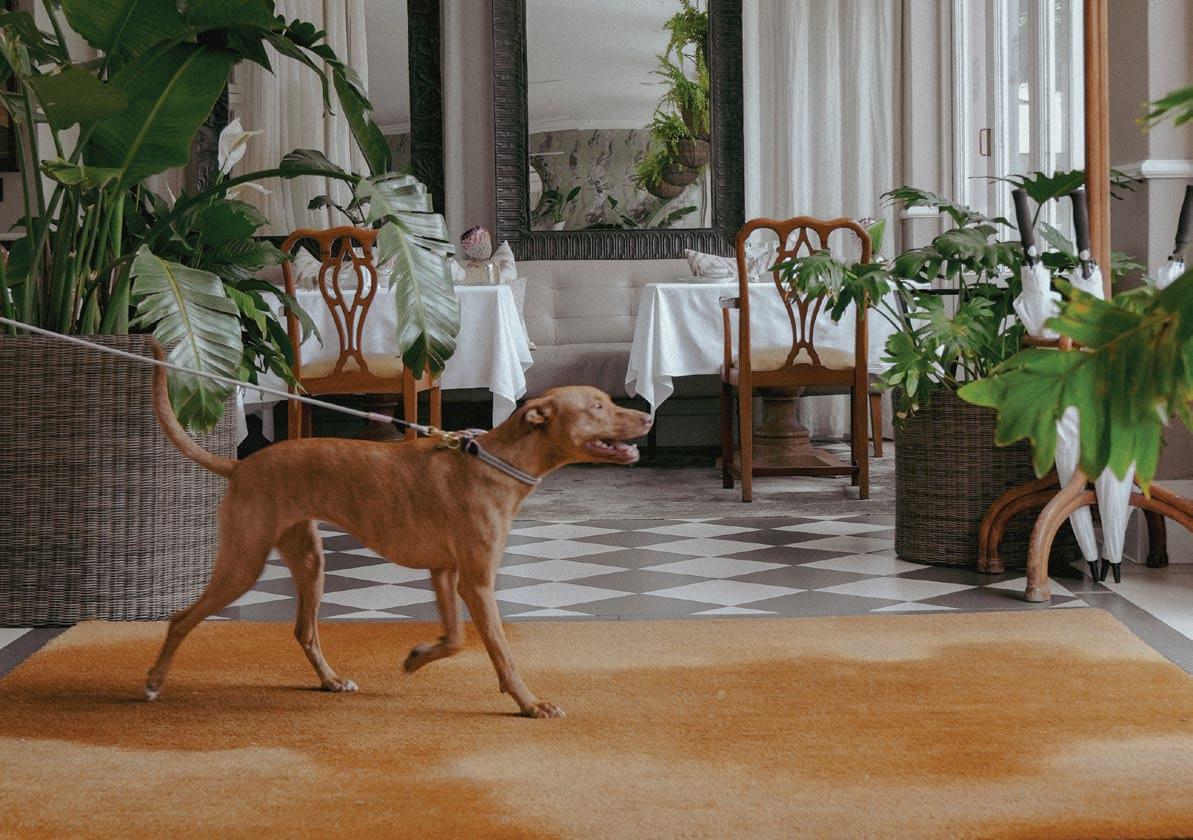
Tiago Sarmento, Managing Director Belmond Southern Africa, says: “The Nellie has long welcomed unique guests within its storied 125-year history. This year we are excited to delight your canine and feline friends with offerings and amenities that take the notion of being pet-friendly to a new level.”
He is correct. Their pet-focus is next level as it is a well thought through offering which is available across the whole hotel. In fact, there are only a few restrictions: pets are to be kept on the leash, never left alone at the table or in hotel rooms and to avoid Librisa Spa, Chef’s Table, and The Red Room by Chefs Warehouse. You and your pet are now truly welcome.
There are five ground-floor hotel rooms where you and your fourlegged family are welcome to stay. As an inclusive property they welcome dogs and cats and have left the door ajar for other pets by arrangement although I think arriving with a pet
python may be a stretch too far.
To elevate your and your pet’s stay, Mount Nelson has collaborated with local dog-turned-lifestyle brand Chommies on a range of luxury accessories for dogs and their people inspired by the hotel’s signature colours and iconic surroundings which includes a lavish velvet pooch bed. The Mount Nelson x Chommies range is on display in front of the hotel’s library lift.
Not to be outdone by the hotel’s famous human concierge service, they have a pet concierge too who can assist with recommendations of petsitters, pet-spa, pet health and even games. Pet Bingo, anyone?
Mount Nelson’s house cat Nellie was born on the property and is about 15-years old. Since then, he has captured the hearts of staff and guests alike, becoming much-loved celebrity in his own right. Nellie, graces the hotel with his presence as a permanent guest. While he spends his
days luxuriating in the warm sunlight or gracefully patrolling his domain. Please do, however, keep your pets about of Nellie’s personal space.
Dedicated amenities and a pet room service menu is available to pamper four-legged guests. Dog Afternoon Tea is R250 while R550 for humans. A surcharge of R1045 per pet, per night will be charged. R95 per portion of wet pet meals while complimentary dry-meals are available. Pet friendly rooms and suites are based on availability.
Bookings for pet-friendly offerings should be made directly with the Reservations Department and not via online services. +27 (0)21 483 1000
In a world where imperfections often lead to overlooked opportunities, Milo’s story stands out as a testament to resilience, love, and the unbreakable bond between humans and their furry companions.
It all began one day at the veterinarian’s office, where a litter of puppies arrived for their first vaccinations. Among them was Milo, a tiny bundle of fur with an indomitable spirit. However, Milo was not like the others. A birth defect, a hernia, marred his otherwise perfect appearance. Despite this discouragement, the vet assured that the hernia could be fixed during neutering, offering hope for Milo’s future.
Undeterred by Milo’s condition, we welcomed him into our home with open arms. Little did we know, this decision would change our lives forever.
At home, Milo quickly formed an inseparable bond with our older dog, Flubber.
Where Flubber once lounged lazily, Milo’s infectious energy breathed new

life into him, and soon they became the best of friends.
Six months passed, and Milo underwent surgery to repair his hernia. With the procedure behind him, Milo bounced back into our lives with renewed vigour. His resilience and unwavering spirit brought immeasurable joy to our family. We knew in our hearts that saving Milo that day was one of the best decisions we ever made.
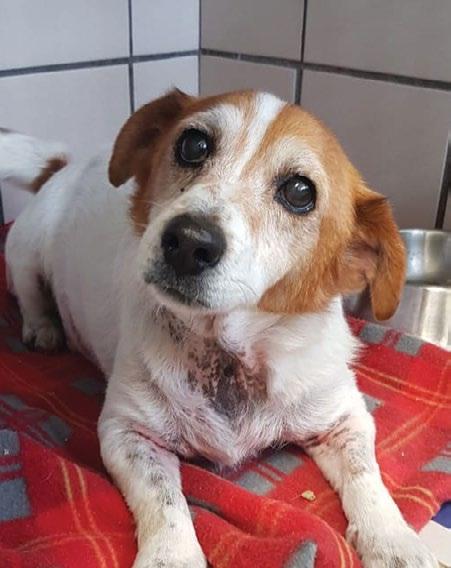
Milo brought an abundance of love and joy into our family from the moment he entered our home. Despite his initial challenges, his presence filled our days with laughter and warmth, and it wasn’t long before he became an integral part of our lives.
As Milo settled into his new surroundings, it became evident that he possessed a unique ability to bring out the best in everyone around him.
But Milo’s impact extended far beyond the walls of our home. His gentle nature and unwavering affection touched the hearts of everyone he met. However, life took an unexpected turn when Milo began showing signs of illness some years later. Blood tests revealed the devastating diagnosis: diabetes. Our hearts sank as we grappled with the reality of managing
Milo’s condition. Daily insulin injections became a necessary but unwelcome routine, yet Milo endured it all with remarkable patience and grace.
Milo’s health further declined when he began to lose his sight and relied on his other senses to guide him. It was heartbreaking for our family to witness Milo’s gradual decline, knowing that we couldn’t alleviate his suffering completely.
Despite our efforts to provide comfort and support, it became increasingly clear that Milo’s quality of life was diminishing. The decision to say goodbye to our beloved companion was undoubtedly one of the most difficult we ever had to make. With heavy hearts, we bid farewell to Milo, our faithful friend, and cherished family member.
Reflecting on Milo’s journey, we are reminded of the profound impact he had on our lives.
Though Milo may no longer be by our side, his memory lives on in our hearts forever. We are grateful for the time we shared with him, and the countless memories we treasure dearly. Milo may have been “just a dog” to some, but to us, he was so much more—he was family. In his honor, we celebrate his life, his legacy, and the everlasting bond we shared. Farewell, dear Milo. You will always be remembered as the best pet ever.












and I’m a vet at a referral practice in Cape Town, dealing exclusively with dogs and cats. I’m a cat-lover, and proud cat-dad to two rescues named Natsu and Falcon. In a world filled with conflicting veterinary information, Petprints has given me a chance to try and make sense of some of the muddle. So, if you have anything you want to ask, send it through and I’ll do my best to help you out.
Q: Dear Doctor Travis, after seeing the vet, my dog is crawling under everything imaginable, the desk, the coffee table, the smallest spaces possible. Our vets are great, and this is the first time he’s acted like this. Could this be anxiety, or do you think it’s pain from the procedure that he’s gone through? We are vigilant with his pain medication, but it’s quite concerning. How do we handle a situation like this should it happen again in the future?
This type of behaviour could be due to either pain or stress, and sometimes it can be difficult to know which of the two it is. It might even be a combination. Most commonly, it’s due to pain. Depending on the procedure and the individual patient, some dogs will be perfectly comfortable with some anti-inflammatories for a few days. Other dogs might be more sensitive to pain and require additional pain-killers that aren’t routinely dispensed. If your dog was only given anti-inflammatories this time, maybe next time you could ask for additional pain control to use for the next few days. In patients like this, the medication Gabapentin can be useful. It is a pain killer that works well in combination with anti-inflammatories, but it also has a sedative effect that tends to help with anxiety.
The question doesn’t mention whether the patient was sedated. Some animals can experience dysphoria after sedation, which is a delirious state characterized by restlessness, panting and vocalization. If your pet ever experiences these types of symptoms, put them in a quiet area with dim lighting until they recover. These symptoms usually pass in a day.
Q: Hi Dr Travis, this is more of a general question. Every time we visit the vet, they take our pets to the back for testing. From drawing blood to taking swabs. Why is this? Why can’t the vet just do this in the consultation room where we are?
I can’t answer this question on behalf of all vets, but for me, personally, I tend to take patients away from owners for blood collection because I feel more comfortable working that way. When it comes to taking swabs or smears, I’m comfortable performing those procedures with clients in the room. That is provided they are able to restrain their animal well enough that I can get a proper sample. When it comes to blood collection, however, I never know how the client will react when they see the blood, the needle, or if I miss the vein. Unfortunately, many owners don’t know how to restrain their pets well, and it can be traumatic when your pet is uncomfortable and you have to wrestle them to be still. This is also another reason why I tend to take the animals to a nurse or orderly to hold for me. This way the procedure is a lot less stressful for everyone, including the patient.
Q: Dear Dr T, I am trying to get my friends to stop smoking. My question is, can pets contract second hand smoking the same way humans can? They love their cat more than anything in this world and I’m sure that they would stop if they knew that this would affect her as well.
All pets can suffer consequences from being exposed to second-hand smoke. If we’re talking about cats in particular, second-hand smoke puts them at an increased risk of inflammation of the airways and can trigger feline asthma flare-ups. They are also more prone to upper airway and eye infections. Cats can also be exposed to a “third-hand” smoke, which is caused by the residue that smoke in the environment leaves in their fur. Since cats groom themselves with their tongues, they can ingest the toxic particles contained in this residue, and this can increase the risk of cancers in the mouth. There is an interesting study that was done last year in Turkey, where the researchers compared several biomarkers in cats exposed to tobacco smoke, to cats not exposed to tobacco smoke. Bio-markers are chemicals in the body that we use to measure processes in the body, and some can be used to evaluate how healthy organs are. Surprisingly, there was an increase in the creatinine and blood glucose levels in cats exposed to tobacco smoke compared to the cats that were not. While these levels were still within the normal range, this had shed some light on the possibility of passive tobacco smoke increasing the risk of diabetes mellitus and kidney disease in cats as well.
Q: Hi Docter, I recently saw a TikTok that explained that people with a blood type O negative can also donate blood to dogs because dogs are also O negative. Is this true?
Thank you for this question. There is a lot of veterinary misinformation on TikTok, but this was one that I hadn’t heard of before. Dogs don’t have the same blood types as humans do, and blood transfusion between the two species is not recommended. There was a study published in the Journal of Special Operations Medicine in 2019 that tested the compatibility of human and dog blood.
All samples showed cross reactions, with many causing breakdown of the blood cells. It’s a pity because there are so many cases where blood is needed to save the life of a patient. For this reason, I would strongly advise anybody who is reading this to check with their local vet to see if they have a blood donor list. Not all dogs are able to donate blood, but if your dog weighs more than 25kg and is between the age of 2 and 6 years, they may be able to save a life. Cat donors are also desperately needed at times too. Interestingly, there is research to suggest that canine blood can be donated to cats in emergency situations. This is called a Xenotransfusion, and is only used if no alternative is available as the donated blood is quickly broken down by the recipient’s immune system.

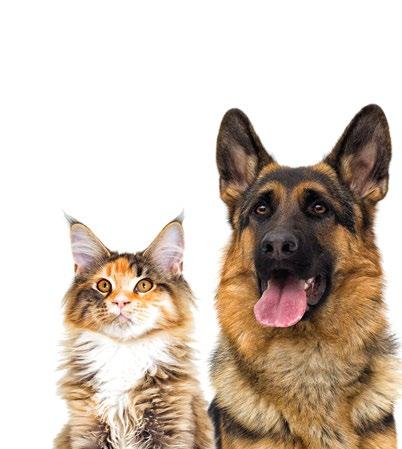


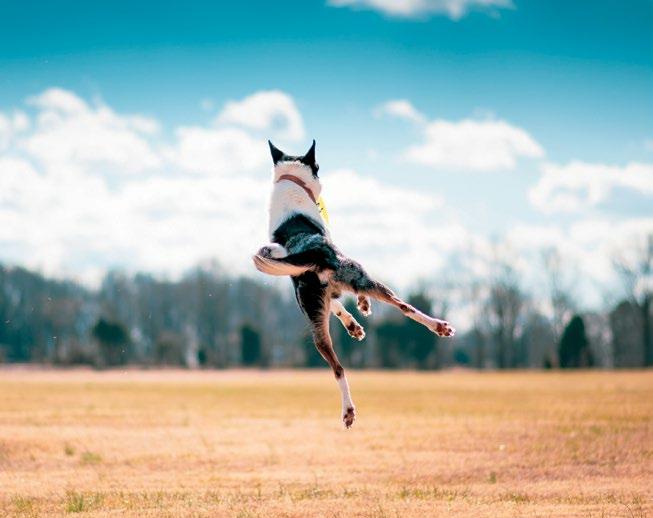

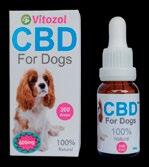




Pipsqueak is a 9-month-old male. He was hand reared because he was found at 10 weeks old stuck under sticky car oil. We had to cut him out of it and tube feed him until he was strong enough to eat on his own. We then had to teach him how to walk. He is a very sweet and affectionate dog.
Lakia is 5 months old and was found as a petrified stray. She joined our family at Paws and Purrs and she changed completely! She is now full of energy and is always ready to play with the children.

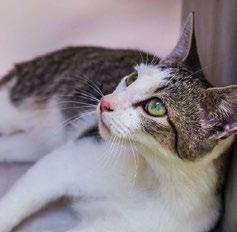
Hunter is a 1-year-old male, Lab cross Beagle and is such a sweet boy. He just wants to be around people and sit on the couch with you.


Gato is a male and always looking for a lap to sit on or a leg to rub up against, he is the most affectionate cat.
Blu is a 6-month-old male and was the shiest in his litter. He is the funniest boy we have and he loves to play and run and sneak up behind you and jump.
Missy is a 7 months old female. She came in as a feral kitten she was quite feisty in the beginning but now she will talk your ear off until you give her rubs and cuddles.
Adoption Fee: Paws and Purrs Rescue SA NPC
Adoption Fee: R1300.00 for cats/kittens and R1500.00 – puppies/dogs (includes sterilisation, first vaccination, deworming and tick and flea treatment.)
Contact details: Lexi Lines – 079 429 4779 pawsandpurrsrescuesanpc@gmail.com





Amari is approximately 8 years old and a Border Collie and Chow cross. She is still very active and loveable.

At 4 years young, this gentle soul is not only sterilised and fully vaccinated but also the epitome of sweetness. A tad shy at first, give her a little time and she’ll warm right up especially with a calm canine companion to show her the ropes.
At 3 years young, Peppa is the epitome of happiness and friendliness. Always ready to brighten your day. Peppa excels in spreading cheer and energy but she’s also a pro at mingling with other dogs, making her the perfect addition to any household.
At just 10 weeks old, Phoenix is a bundle of joy, overflowing with sweetness and playfulness. This delightful pup has a passion for two things: a bouncy ball and a fluffy toy but what Phoenix loves most is cuddle time.



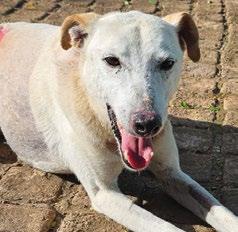
A 10-week-old Boerboel mix with a personality as big as her appetite! Coco is the epitome of sweetness and cuddles, winning hearts with her gentle demeanor and insatiable love for her meal.
Our 2-year-old cross breed wonder girl who can’t get enough of tennis balls. Ambrose is a female dynamo who’s always ready for playtime. She’s like the Energizer bunny; she keeps going and going.
Peggy Sue is 7 weeks old and a female Labrador and Husky cross. She is super sweet and loveable. She just wants cuddles.
Prince is a 9-year-old male who is a real gentleman. He loves his food and head tickles. Prince needs a retirement home.
Adoption Fee:
Adoption Fee: 1500.00 (includes puppy vaccinations and sterilisation at 6 months.)
Contact details: Sam – 083 654 2353 www.animalantics.co.za

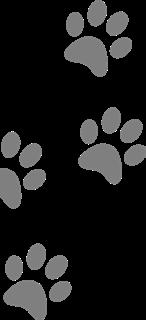

The UK’s favourite breed has come a long way from its hard-working Canadian roots, but today’s Labrador still makes a reliable working dog because the breed is active, intelligent, eager and easy to train. We can see why this highly intelligent breed is so popular, and for a good-natured family pet, the Labrador is a sensible choice. Labradors are among the most commonly kept dogs in the world and have been voted the most popular breed in the world for many years. The Labrador is a friendly, energetic, and playful breed. They were bred as sporting and hunting dogs but are now widely kept as companion dogs. Labradors are also trained as a guide or assistance dogs, or for rescue or therapy work. Labradors are easy-going, rewarding pets with high energy levels, which means they love extra attention, stimulation and exercise.They make excellent companions, as well as
assistance dogs due to their sensitive and affectionate nature.Labradors do well being part of a family, and get on well with children and other pets. Intelligent and eager to please, Labs relish the chance to learn and are quick to pick up cues. Labradors are highly social by nature and enjoy running free with other dogs which is a fantastic way to burn brain energy and it is very stimulating for them. Labradors love the water and are natural born swimmers. Labradors can be described as being a medium-large breed dog varying in weight from 20kg’s – 40kg’s. The Labrador’s coat should be short and dense, but not wiry. The coat is water-resistant, so the dog does not get cold when taking to the water in the winter. That means that they are naturally have a slightly dry, oily coat. They were usually bred to have broad heads, however with years of different breeding, their heads have varied in shape and size. There are 3 different colour Labradors, being yellow, black and chocolate. Puppies of all colours can occur in the
same litter. There is a great deal of variety among Labradors. As a result of specialised breeding, there are significant differences between field and trial-bred and show-bred lines of Labradors. In the United States, the former is sometimes mistakenly referred to as “American” and the latter as “English”, in fact, both field and show types are bred in both countries and all Labradors are descended from British lines. Labradors are famous for being trained to be guide dogs and assistance dogs. They are also commonly used as detection dogs, police dogs and military dogs. Labradors have proven to have a high success rate at becoming guide dogs. The breed is also used in water rescue/lifesaving.
The Labrador continues to be a valued pet for any family and are just a wonderful breed all round if given the correct training and stimulation. Owing to their high energy levels, they can be boisterous, eating, chewing demolition machines.

Bruno is a 7-year-old male. He is very loving and gentle. He loves children and other dogs. Unsure around cats.

Buddy is a 4-year male. He would best get along with a female dog. He has come a long way while with us in kennels and he loves to play. He loves water and can splash around all day

Dax is 2-year-old male. Dax is the sweetest, most lovable boy who really needs a patient, understanding home. He is coming out of his shell but needs someone who will provide him with reassurance and TLC. He has started to initiate play, and really is just too special.

Thor is a 9-year-old male. He thinks he is still a puppy, he loves plastic bottles and likes water from a hose pipe. He is placid but needs time getting used to new people.



Kiwi is a 2-year-old female. This sweet girl is loving and playful and good with kids. She is very protective of her humans though and would be best suited as an only dog.

Zedd is a 5-year-old male. He is very playful and extremely energetic. Friendly with strangers who he meets but does tend to jump, although he has not been aggressive towards people. He loves bathing.
Daisy is a 2-year-old female. This sweet girl is loving and playful and good with kids. She is very protective of her humans though and would be best suited as an only dog



Nella is a 4-year-old female. She is a loving companion, very intelligent and trainable.

Contact details:

Website – www.labrescue.org.za
Contact number – 064 659 7464
Email – info@labrescue.org.za
Facebook – Labrador Rescue South Africa Instagram – labradorrescue.southafrica
Adoption fee is between R1000 and R1500 and includes sterilisation, vaccinations, microchip, deworm and tick and flea treatment.
This is dependent on whether or not we need sterilize or if the Lab has already been sterilised by the previous owner.








